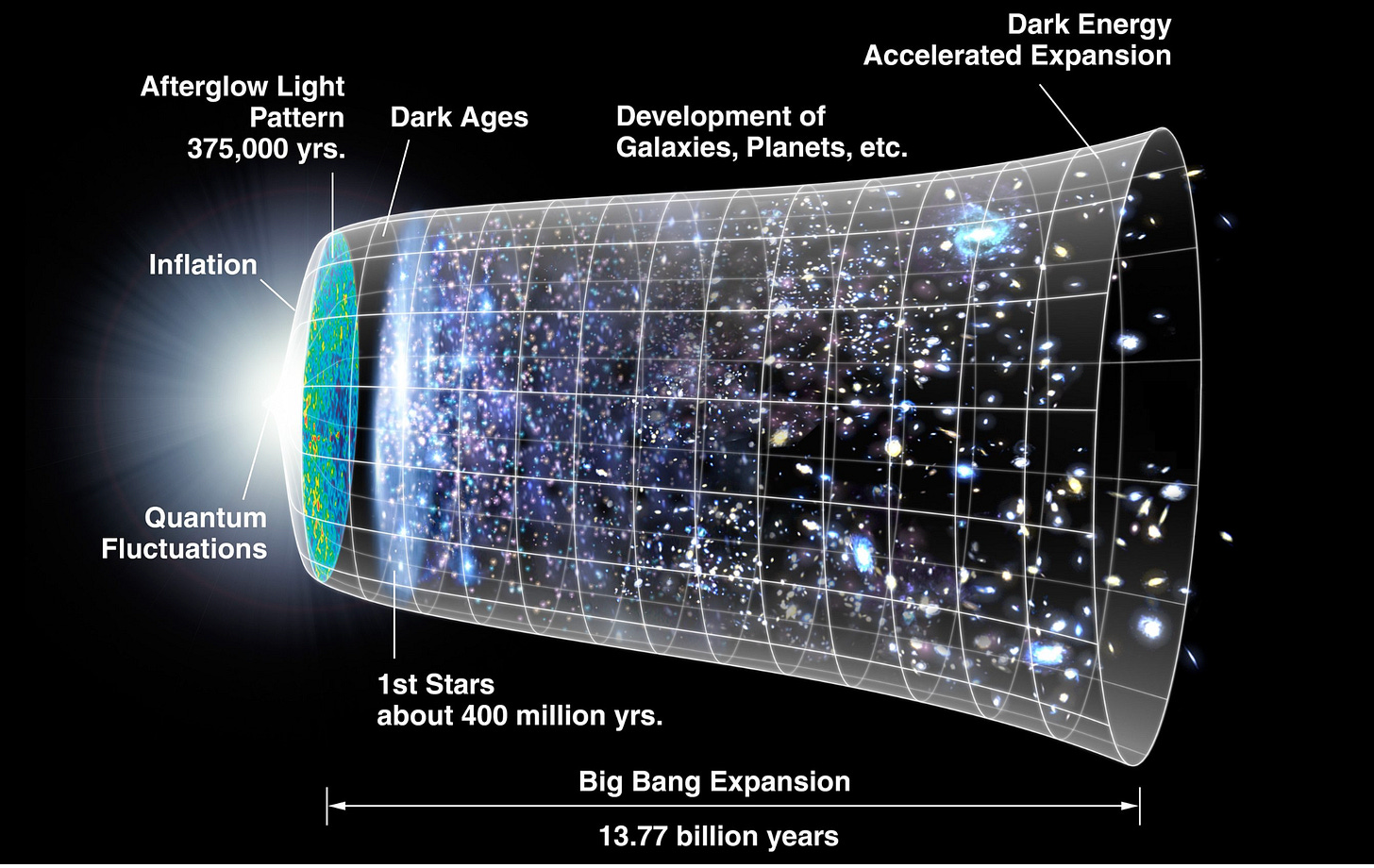From the Big Bang to Race and IQ
My new Taki's column explains a lot about where I'm coming from.
My new column in Taki’s Magazine covers a lot of ground (and/or space):
Steve Sailer
August 27, 2025
Way back in the 1970s, I was fascinated by cosmology, the study of the origin of the universe.
It had been discovered by Edwin Hubble in the 1920s at the Mt. Wilson observatory, which I can see from the end of my block, that the universe consists of uncounted numbers of separate galaxies, like our Milky Way. Next, Hubble found that the galaxies were flying farther apart.
In the late 1920s, a brilliant Belgian priest and physicist named Father Georges Lemaître propounded the “hypothesis of the primeval atom,” or what we now call the Big Bang: The universe as we know it had been created a finite amount of time ago.
Lemaître’s theory, which was highly reminiscent of St. Thomas Aquinas’ “Prime Mover” proof for the existence of God—everything moving in the universe must have been set into motion by an Unmoved Mover, namely God—elicited suspicion among scientists that it was all just a Catholic plot to win believers in a Creator.
So, physicist and science fiction author Fred Hoyle, among others, proposed an alternative Steady State model in which the universe is infinitely old yet, while expanding, is otherwise stable. The empty space left behind by the receding galaxies hatches new matter through some process that is currently unimagined but is definitely natural, not supernatural.
Read the whole thing there. It’s explains something about where I’m coming from.



You've shown plenty of talent, courage and honesty so it's normal that those who sold themselves in the service of lies hate you.
There is a YouTube lecture on Epistemology by Robert Jenson, a left-wing journalism professor. He discusses the question, “On what do we base our understanding of what is true?”Jenson asserts that we do so in three ways: correspondence, coherence, consensus.
Correspondence: something is true when it corresponds to reality. The scientific method is intended to establish knowledge of this sort.
Coherence: What is reality may be beyond our comprehension, so we test our truth claims by whether they fit with other things we believe to be true. We don’t believe different truth claims separately, we believe them as part of a worldview.
Consensus: Something is “true” when we achieve a consensus about it. It doesn’t have to meet the standard of correspondence or coherence as long as it works best for us as a group, that the consensus helps us to solve problems. When NPR CEO Katherine Maher famously stated, “Our reverence for the truth might be a distraction that is getting in the way of finding common ground and getting things done,” she was promoting this last version of truth. It’s what Plato called the Noble Lie, a myth or doctrine promoted to maintain social order, “for the greater good.”
The fundamental principle of liberalism is nondiscrimination. Survival of the liberal social order requires the noble lie that races and sexes are equal in ability. Any difference in outcomes must be ascribed to social inequality. As Ibram X Kendi states, “Either something is wrong with black people or something is wrong with society,” and you are forbidden to believe the former. For Steve Sailer to suggest that 50% of discrepancies might be due to innate differences is unacceptable. We must ignore scientific facts and our lived experience to support the noble lie.